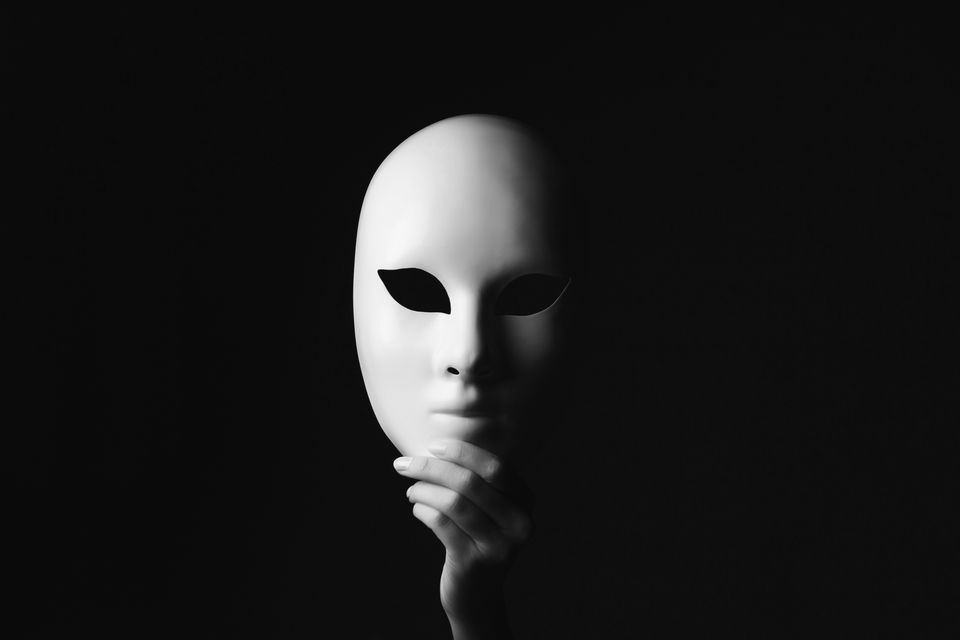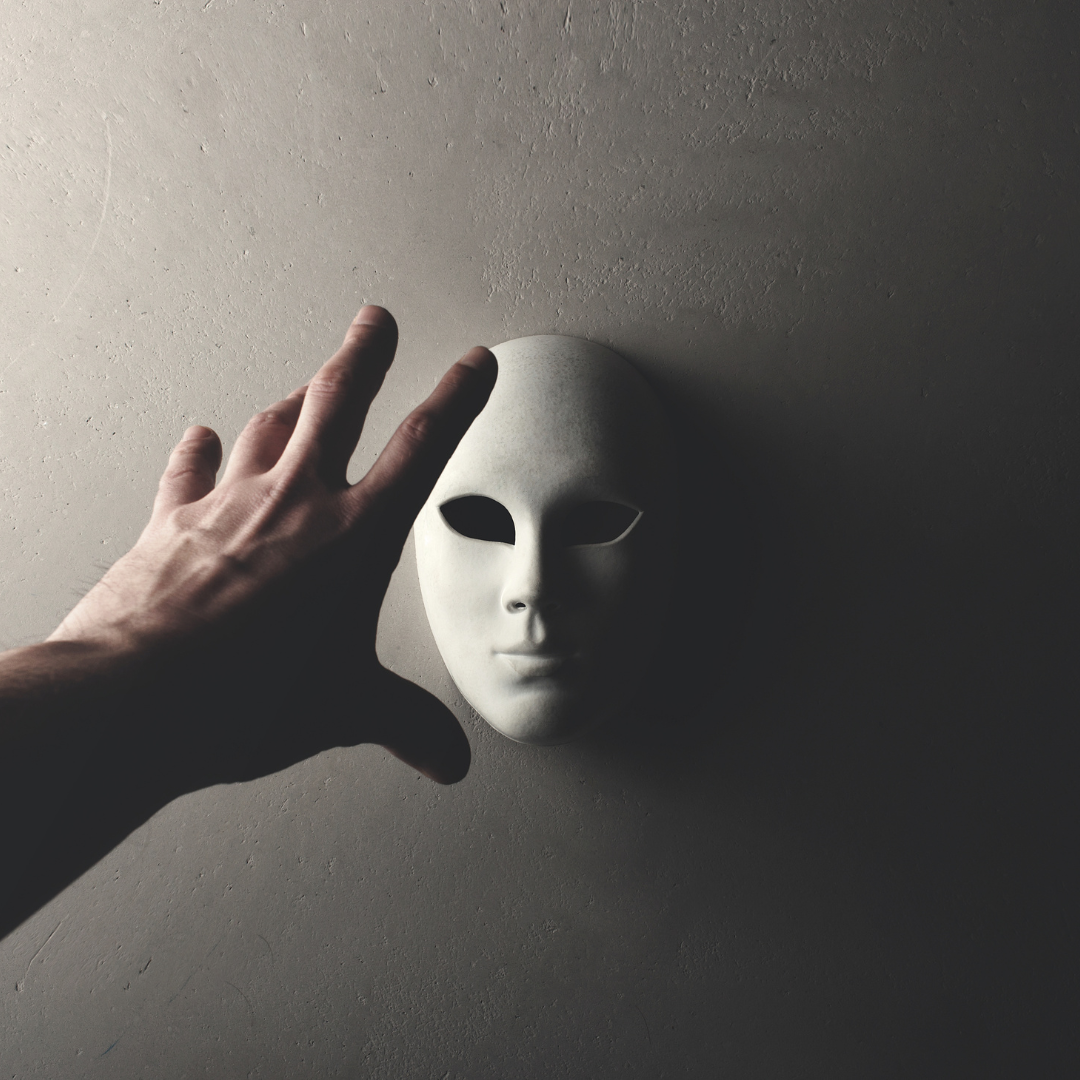Are You Wearing a Mask? 11 Common Masks We All Wear

In our intricate dance through life, we often find ourselves donning an array of masks, each carefully crafted to suit different scenarios and encounters.
These masks, though not inherently deceitful or dishonest, serve as our psychological armor, protecting us from the harsh winds of judgment, criticism, or vulnerability.
We wear them to fit in, to avoid hurt, or simply to navigate the complexities of our existence. Yet, beneath these well-woven veils lies our authentic self, waiting to be unveiled.
Unmasking the Unconscious
These personality masks, more often than not, function as our subconscious defense mechanisms. They shield our self-esteem, shielding us from blame, judgment, or heartache.
While they offer temporary refuge, the cost can be steep. The ceaseless effort to maintain these masks can lead to emotional exhaustion, anxiety, depression, and a disconnection from our true selves, fostering a sense of isolation.
Understanding these masks isn't an exercise in condemnation; it's an opportunity for introspection and growth.
By acknowledging and dissecting these masks, we can embark on a journey of self-discovery, nurturing genuine connections, and ultimately, living a life more in tune with our authentic selves.
Unmasking the Masks

Let's delve into some common masks that you, or someone you know, might be wearing:
- The Martyr or Victim Mask: Imagine someone who frequently portrays themselves as the victim in various situations, attributing their failures or problems to external factors. For example, instead of acknowledging their role in a failed relationship, they might constantly blame their partner's shortcomings. This mask serves to protect their self-esteem by avoiding self-criticism.
- The Bully Mask: Think of a person who exhibits aggressive behavior or belittles others. This behavior often conceals deep feelings of insecurity or self-doubt. They use this mask as a defense mechanism to assert control and to keep others at a distance. It can be rooted in past experiences of trauma or low self-esteem.
- The Humor Mask: Picture someone who uses humor as a shield against revealing their true emotions. They might make jokes or laugh at themselves even in situations where they feel sad or hurt. This mask helps them deflect attention away from their genuine feelings, preventing them from having to confront or share their true emotions.
- The Calm Mask: Visualize an individual who always maintains a composed and unruffled exterior, even when they are experiencing intense emotions internally. This mask hides their inner turmoil, often leading to emotional suppression, where emotions are bottled up and may eventually erupt unexpectedly.
- The Overachieving Mask: Think of someone who is constantly driven to achieve perfection in everything they do. They have an insatiable need for acceptance and praise, but this comes at the cost of extreme anxiety and a paralyzing fear of failure. They tie their self-worth to their achievements, and any mistake is seen as a personal flaw.
- The Self-Bashing Mask: Consider a person who engages in self-criticism and self-deprecation, often disguised as self-jokes. This self-deprecating humor is used as a defense mechanism to preemptively deflect criticism from others. It can be a reflection of genuine low self-esteem.
- The Avoidant Mask: Imagine someone who tends to withdraw from social interactions and avoids taking risks due to a fear of rejection or judgment. This mask can lead to social isolation and reluctance to engage with others, hindering personal growth.
- The Controlling Mask: Picture an individual who exerts control over their environment, often through meticulous planning or dominating others. They do this to create a sense of security because they harbor underlying fears and insecurities that they can't control.
- The People-Pleasing Mask: Think of someone who goes to great lengths to make others happy, often at the expense of their own needs and desires. This mask is worn to gain acceptance and approval, but it can result in a loss of personal identity and constant anxiety about meeting the expectations of others.
- The Socializer Mask: Visualize a person who appears outgoing and sociable but avoids deep or meaningful connections. They keep their interactions superficial to mask their true feelings, preventing others from getting too close.
- The Conformist Mask: Consider someone who desperately seeks acceptance by conforming to the behaviors and cues of their social group. They fear standing out or being rejected and, in the process, may lose their sense of individuality.
Each of these masks serves as a defense mechanism, protecting individuals from perceived threats or discomfort.
However, they can also hinder authentic connections, self-awareness, and personal growth. Understanding these masks is the first step towards unmasking and living a more authentic and fulfilling life.
Peeling Away the Masks: A Deeper Dive into Self-Discovery
Unmasking the layers that conceal our true selves is a profound journey, one that calls for a multifaceted approach.
It's not a sprint but a marathon, an ongoing process of self-discovery and personal growth. Let's explore the steps to unmasking in more detail to guide your readers on their own path to authenticity.
Self-Reflection:
- Understanding Triggers: Start by asking yourself what situations or emotions trigger the need for a mask. These triggers are like clues leading you to your hidden emotions and motivations. For example, do you put on a facade of confidence when you're feeling insecure? Identifying these triggers is the first step toward self-awareness.
Example: Imagine you're at a social gathering, and you suddenly notice yourself putting on the "Socializer Mask" by becoming the life of the party. Reflect on what emotions or situations prompted this behavior. Was it a fear of being judged or left out? - Identifying Patterns: Take time to observe recurring patterns in your behavior and reactions. This may require keeping a journal or practicing mindful reflection. Patterns can reveal which masks you frequently wear and why you use them as a defense mechanism.
Example: Through journaling, you notice a pattern of self-deprecating humor during moments of vulnerability. You realize that this "Self-Bashing Mask" emerges when you feel criticized or inadequate. - Emotional Connection: Delve deeper into the emotions that drive your masking behavior. Understand the fears, insecurities, or desires that underlie the need to hide behind a mask. Connecting with these emotions allows for a more profound understanding of oneself.
Example: As you explore the emotions behind your "Calm Mask," you realize it's a way to cope with overwhelming anxiety and fear of being judged. This emotional connection helps you uncover the roots of this mask.
Acceptance:
- Embracing Authenticity: Letting go of societal expectations and embracing your individuality is an act of courage. It means acknowledging that you are imperfect, unique, and worthy of love and acceptance just as you are. This step involves breaking free from the molds that society or past experiences have imposed on you.
Example: Embracing authenticity means accepting that it's okay to show vulnerability and express your true emotions, even if it goes against the societal expectation of always appearing strong and composed. - Preparation for Rejection: Understand that authenticity may not always garner immediate approval or understanding from others. Some may resist or misinterpret your true self. Be prepared for potential rejection or criticism. Your self-worth is not dependent on others' opinions.
Example: If you've been wearing the "People-Pleasing Mask," embracing authenticity may mean saying no when you need to, even if it disappoints others. Be prepared for some people to react negatively, but remember that your worth isn't tied to their approval. - Self-Compassion: Throughout this journey, practice self-compassion. Treat yourself with the same kindness and understanding you would offer a dear friend. Understand that unmasking is a vulnerable process, and it's okay to make mistakes or face setbacks along the way.
Example: If you find yourself slipping into old masking habits, instead of berating yourself, practice self-compassion. Remind yourself that unmasking is a journey, and setbacks are a natural part of growth.
Unmasking isn't an event with a fixed endpoint; it's an ongoing journey of self-discovery and growth.
It demands courage to confront your true self, honesty to acknowledge your masks, and a steadfast commitment to living authentically.
The rewards are profound—a more fulfilling and connected life awaits those who embark on this transformative path.
Reflecting on the Unmasking Journey
- Which masks do you recognize in yourself, and why do you think you wear them?
- How have these masks affected your relationships, self-esteem, or daily life?
- What steps can you take to become more aware of these masks and begin to let them go?
- How do these masks relate to your eating habits or other behaviors?
- What support or resources do you need to embrace your true self and drop the masks?
Embarking on the journey to unmasking is a powerful step toward living a more authentic, fulfilling life. It's a voyage that begins within, and as you shed each layer, you reveal the beautiful, unique individual that you truly are.